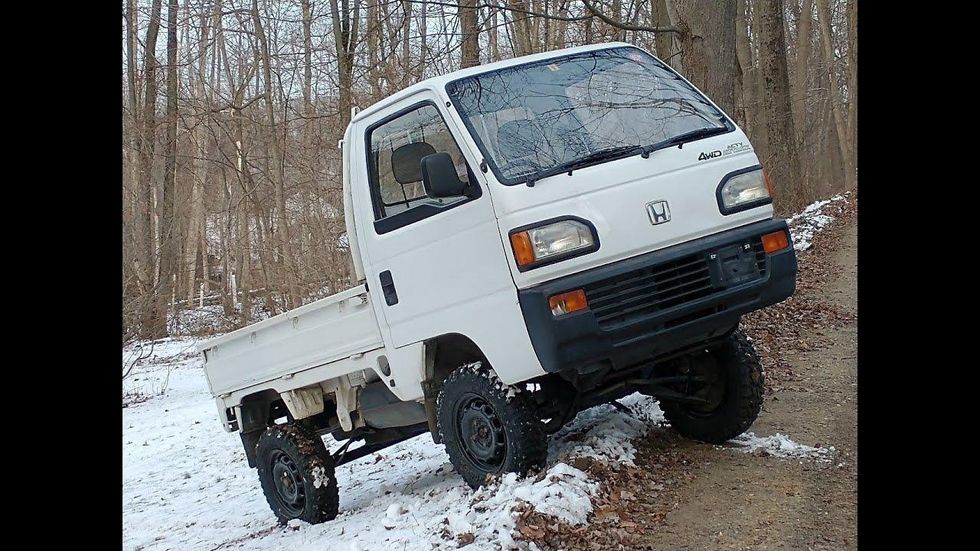Do-It-Yourself Mini Truck Maintenance: Straightforward Methods for Major Improvements
Owning a kei vehicle is a unique adventure that brings a combination of functionality and appeal. These compact, versatile vehicles, originally from Japan, are perfect for navigating narrow spaces and handling everyday tasks with ease. However, like any vehicle, they require routine maintenance to ensure them operating smoothly and effectively. By putting a little effort and care into your kei truck's upkeep, you can ensure it remains dependable and performs at its best for years to come.
In this manual, we will examine simple yet efficient maintenance tips tailored specifically for kei trucks. From routine checks to necessary repairs, these straightforward steps will assist you avoid expensive issues down the line and extend your truck's lifespan. Whether you are a seasoned mechanic or a novice owner, these easy-to-follow tips will enable you to take charge of your kei truck 's maintenance, ensuring every drive a pleasant experience.
Essential Tools for Kei Truck Maintenance
Caring for your kei truck requires a set of essential tools to ensure that you can conduct routine checks and needed repairs. A simple toolbox should include tools like wrenches, drivers, pliers, and a socket set. These tools will help you tackle most common issues that arise, such as tightening loose bolts, changing components, or making modifications. Purchasing a reliable set will conserve time and effort, as well as make the maintenance process smoother.
Another critical tool for your kei truck maintenance is a digital multimeter. This device allows you to measure voltage, current, and resistance, making it invaluable for troubleshooting electrical problems. With a multimeter, you can easily check the condition of your battery, fuses, and wiring. Proper electrical maintenance ensures that your car runs optimally and prevents unexpected breakdowns.
To wrap up, do not underestimate the importance of having a good jack and jack stands. Frequently checking your kei truck's undercarriage, brakes, and suspension systems is crucial for safety and performance. Investing in a durable jack will give you the necessary height and stability to perform these checks properly. Make sure to use jack stands for extra security whenever you are working underneath the vehicle.
Consistent Checkups: Which to Examine
Carrying out routine maintenance on your kei truck is essential to keep it running properly. Start by checking the oil levels and condition. Low engine oil can cause serious engine issues, so make sure you replace it per the manufacturer's instructions. Checking the oil filter during this task is also important, as a clean filter helps maintain oil quality.
Subsequently, focus on the wheel condition and pressure. Proper tire care not only enhances fuel consumption but also increases safety on the road. Watch for signs of abnormal wear and check the tread depth to ensure they meet legal standards. Consistently inflating your tires to the appropriate pressure will assist prolong their longevity and boost overall handling.
In conclusion, check the brake system for signs of deterioration. This includes checking the brake pads, discs, and fluid levels. Squeaking noises while braking can indicate that it’s time to replace the pads. Maintaining brake performance is essential for your safety and the safety of others, so make this a priority during your regular checkups.
Resolving Typical Problems

Kei vehicles, although commonly trustworthy, can occasionally present problems that may bewilder the owner. One frequent challenge is starting troubles. If your kei truck is having difficulty to ignite, the initial step is to inspect the power source. Make sure that the terminals are clean and tight, and contemplate evaluating the battery's charge. If the power source is fine, turn your focus to the fuel system; a blocked fuel filter or an depleted tank can stop the engine from igniting.
An additional regular issue is excessive heat. This can take place for multiple reasons, such as insufficient coolant levels, a defective thermostat, or a broken water pump. Commence by checking the coolant reservoir and adding coolant if needed. If overheating continues, it may suggest a more serious concern, such as a crack in the cooling system that needs prompt care to avoid engine damage.
Finally, brake concerns can also happen in kei trucks, especially if you detect a soft brake pedal or a decrease in stopping power. Inspect the brake fluid level, as low fluid can diminish braking effectiveness. If the fluid is enough, you may need to inspect the brake pads and rotors for damage. Periodically maintaining these components will both ensure safety but also improve your driving journey with your kei truck.